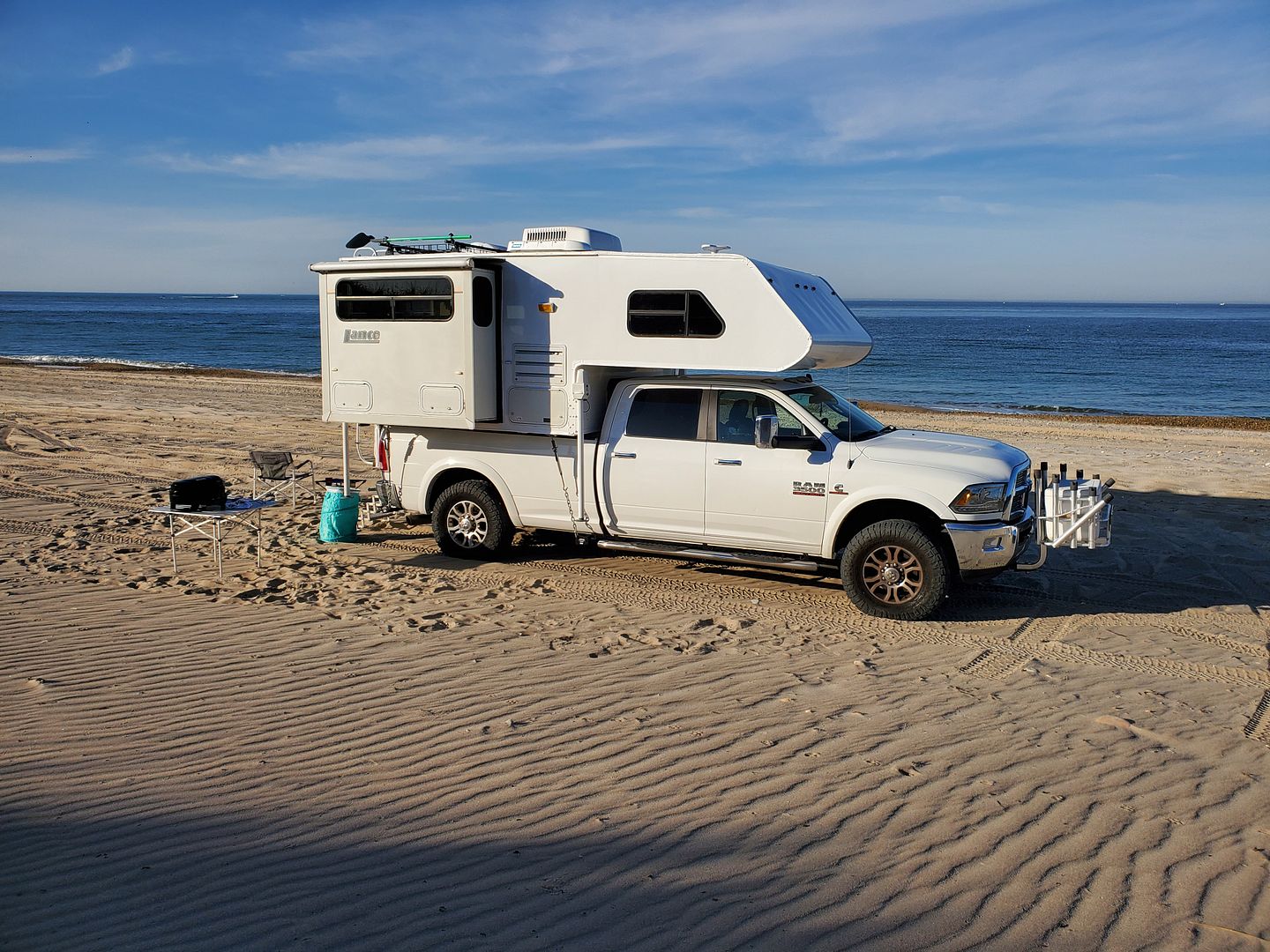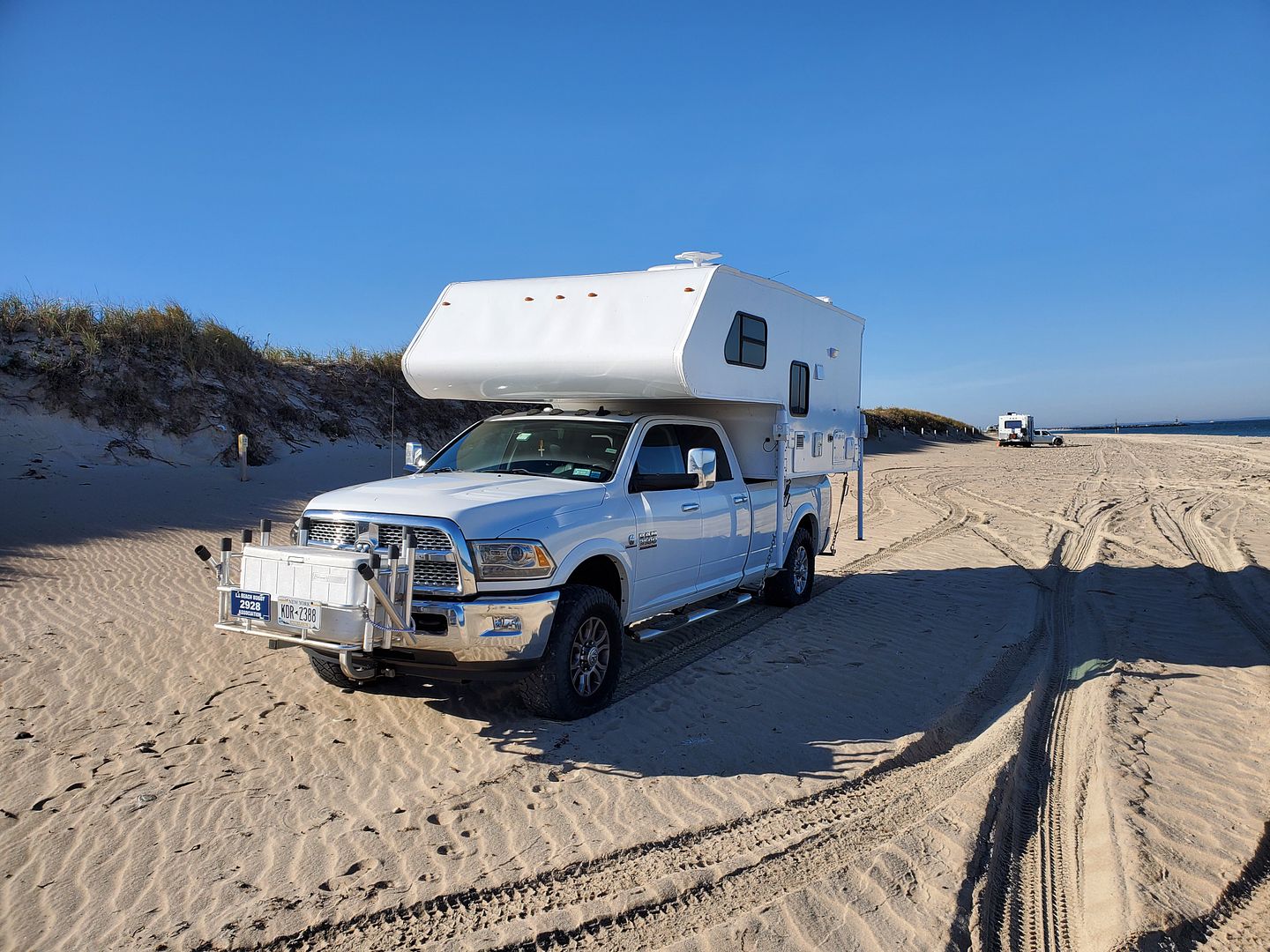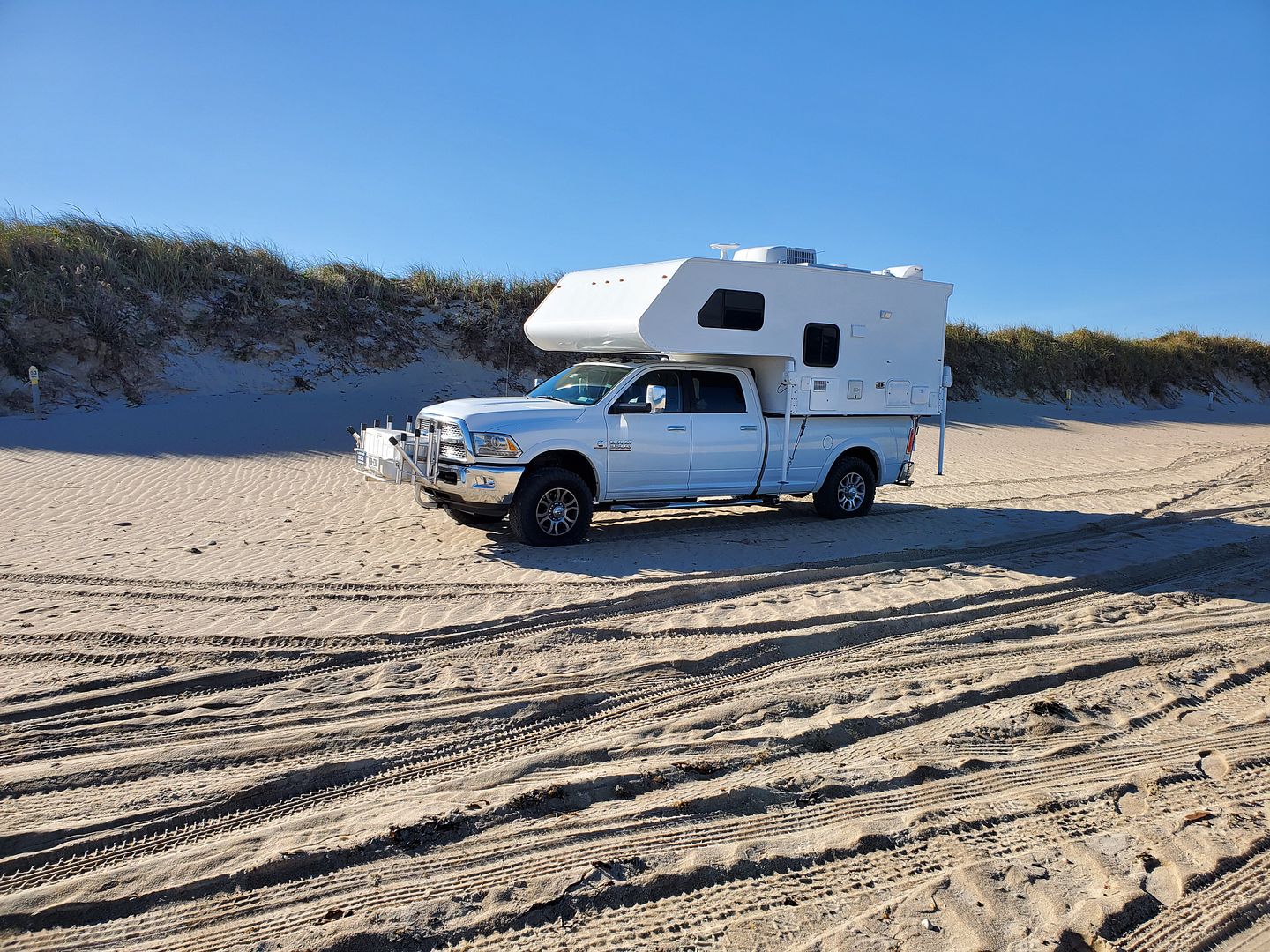LosAngeles
Jan 02, 2021Explorer
F350 tire airing down ranges w/ truck camper
F350 tire airing down ranges w/ truck camper
Hi all
I’m doing research and getting opinions and info about airing down pressure ranges (I know it varies a lot depending on tire, load, rig, conditions, etc)
We have a 4x4 F350 (2020) CrewCab with 8’ bed - single rear wheels (SRW) ….. plus a truck camper about 9.5 feet long on the back.
Tires are the shoes it came with - Load range E - GOODYEAR WRANGLER - “ALL TERRAIN ADVENTURE” LT275/70R18
(and overall i am very happy with them, for what it is worth. I do NOT want to change tires - they ride great, very quiet on pavement, and decently knobby, etc)
Total weight (wet, loaded) is 11,300
Now obviously we won’t be doing any hardcore wheeling…..
and I won’t seek out soft sand or soft deep snow……
and maybe I never need to air down, ever….
but in the future - if we suddenly found ourselves in a position where we wanted / needed to carefully drive off-road, on soft snow, soft sand, and wanted to stack the deck in our favor, I could air down somewhat to make the contact patch bigger.
I believe with these stock rims and these tires I should not go below 20 psi (does this sound about right for this rig?)
and I do know i’d need to air back up before highway driving. :-)
and yes I’d have a capable air compressor with me….. to air back up….
and likely air back up for any road driving of more than a 1/2 mile or so…..
but any suggestions, just for future reference?
Thanks!
Hi all
I’m doing research and getting opinions and info about airing down pressure ranges (I know it varies a lot depending on tire, load, rig, conditions, etc)
We have a 4x4 F350 (2020) CrewCab with 8’ bed - single rear wheels (SRW) ….. plus a truck camper about 9.5 feet long on the back.
Tires are the shoes it came with - Load range E - GOODYEAR WRANGLER - “ALL TERRAIN ADVENTURE” LT275/70R18
(and overall i am very happy with them, for what it is worth. I do NOT want to change tires - they ride great, very quiet on pavement, and decently knobby, etc)
Total weight (wet, loaded) is 11,300
Now obviously we won’t be doing any hardcore wheeling…..
and I won’t seek out soft sand or soft deep snow……
and maybe I never need to air down, ever….
but in the future - if we suddenly found ourselves in a position where we wanted / needed to carefully drive off-road, on soft snow, soft sand, and wanted to stack the deck in our favor, I could air down somewhat to make the contact patch bigger.
I believe with these stock rims and these tires I should not go below 20 psi (does this sound about right for this rig?)
and I do know i’d need to air back up before highway driving. :-)
and yes I’d have a capable air compressor with me….. to air back up….
and likely air back up for any road driving of more than a 1/2 mile or so…..
but any suggestions, just for future reference?
Thanks!



